3 Describe the Use of Koch's Postulates
This brief review considers whether or not Kochs postulates have been fulfilled for Helicobacter pylori and peptic ulceration. What they are and what they explain 1.
Kochs belief that only one pathogens causes one disease has now been called into question as multiple postulates are increasingly considered out of date.
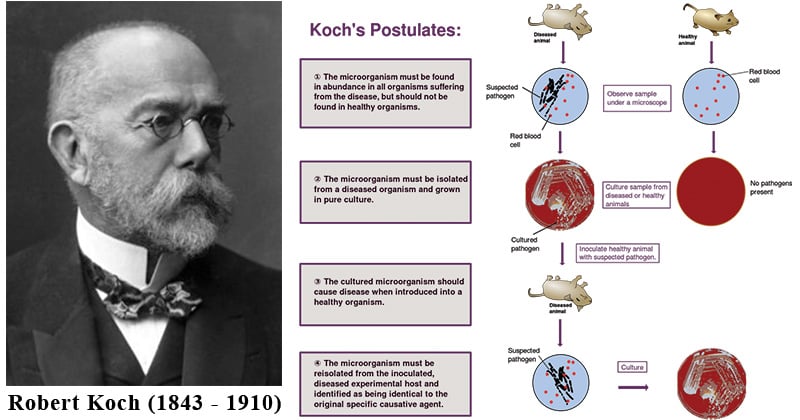
. Sets with similar terms. Microbiologist Robert Koch Author of Kochs postulates a set of rules for establishing a relationship between a causative microbe and a disease. The microorganism must be isolated from a diseased organism and grown in pure culture.
Transfer of the suspected pathogen to an. Distribute copies of the attached Kochs Postulates handout and have students work in groups of two or three to accomplish the experimental steps listed. Simplified more modern Kochs postulates are the following.
Include what conditiondisease you would look for. Kochs Postulates consist of the following four rules. The bacteria must be isolated from the host with the disease and grown in pure culture.
The microorganism must be identified in all individuals affected by the disease but not in healthy individuals. Kochs Postulates Steps. The experimental application of Kochs postulates.
Kochs postulates are the set of rules to show that a specific microbe is causing a disease The first postulate all the patients that have a particular disease must also carry the specific microbes and all other healthy candidates should not have this microbe. A specific organism can always be found in Association with a given disease. Kochs postulates are the following.
The microorganism can be isolated from the diseased individual and grown in culture. The specific disease must be reproduced when a pure culture of the bacteria is inoculated into a healthy susceptible. Kochs postulates are a series of ground rules to.
In part 3 of this series we were introduced to Kochs experimental requirements Postulates. 2 The pathogen must be isolated from the diseased plant and grown in pure culture on nutrient media and. Be able to describe the concept of Kochs postulates the scientific method used to determine the infectious cause of disease.
B List each Kochs postulate with specifics for the microbe you chose. Kochs postulates are four criteria designed in the 1880s to establish a causal relationship between a causative microbe and a disease. Other features are hyperpepsinogenaemia.
Explain to students that they will test each of Kochs Postulates using fruit and fruit mold to simulate diseased host organisms and the infectious agents or pathogens that cause disease. Four criteria that were established by Robert Koch to identify the causative agent of a particular disease these include. Changing how we think about infectious diseases.
Choose a microbe from Fig. The histological features of peptic ulcer disease in man are active chronic gastritis with antral predominance duodenal gastric metaplasia and active duodenitis. What organism did he first use to prove the Germ Theory of disease.
Isolate and identify a plant pathogen from fruit inoculate. With Kochs announcement in 1882 of his work with the tubercle bacillus his famous postulates launched the rational world of infectious disease and. Kock develops germ theory of disease and identifies causative agent for.
The suspected etiological agent must be strongly associated with the disease. Kochs postulates have been critically important in establishing the criteria whereby the scientific community agrees that a microorganism causes a disease. Describe how Kochs postulates demonstrate the link between a specific microbe and a specific disease.
Step 1 of kochs postulates The suspected pathogen must be grown in pure culture step 2 of kochs postulates cells from a pure culture of the suspected pathogen must cause disease in a healthy animal step 3 of kochs postulates The suspected pathogen must be reisolated and shown to be the same as the original step 4 of kochs postulates. The organism can be isolated and grown in pure culture in the laboratory. When introduced into a healthy individual the cultured microorganism should cause disease.
Was born in 1843. The pathogen can be isolated from the diseased host and grown in pure culture. However some of the later findings on disease-causing pathogens are contrary to Kochs postulates.
Kochs postulates state the relationship between a disease-causing microbe and its disease. Kochs postulates vs molecular Kochs postulates. Kochs Postulates The Evolution of Kochs Postulates.
The suspected pathogen can be isolated - and propagated - outside the host 3. 1 The pathogen must be found associated with the disease in all the diseased plants examined. A List which microbe you chose and explain why.
The microorganism must be found in abundance in all organisms suffering from the disease but should not be found in. Some microorganisms could not be cultured in artificial media. The pure culture will produce the disease when inoculated into a respectable animal.
This means that if a microbe is suspected to be the causative agent of a particular disease it. The cultured microorganism should cause disease when. Describe how you would use Kochs postulates to examine some of the ideas for GABA production and neurological outcomes.
Kochs Postulates There are four postulates such as. Collect leaves from their neighborhood or around the school that appear diseased and describe the pathogen signs and symptoms. Kochs postulates are as follows.
It isnt that they cant see the solution. Some pathogens can cause several disease conditions. 1Kochs Bacillus Medical Definition Merriam-Webster Available here.
Even Koch had to modify or bend the strictest interpretation of the first postulate. The pathogen from. Robert Koch circa 1900.
Diseases caused by different species of microorganisms could elicit similar symptoms. Kochs postulates were invaluable at the time they were developed and remain largely. The bacteria must be present in every case of the disease.
The microorganism or other pathogen must be present in all cases of the disease. They are the five exceptions to Kochs Postulates. Kochs postulates were developed in the 19 th century as general guidelines to identify pathogens that could be isolated with the techniques of the day.
Even in Kochs time it was.

Koch S Postulates Plant Pathology Medicine Student Microbiology

Robert Koch And Koch S Postulates
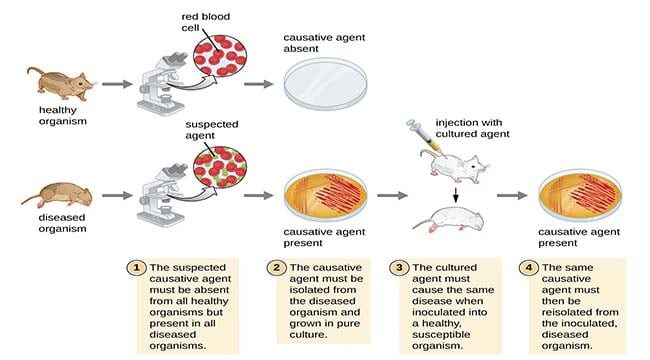
Koch S Postulates And Its Limitations

Germ Theory Of Diseases And Koch S Postulates Youtube
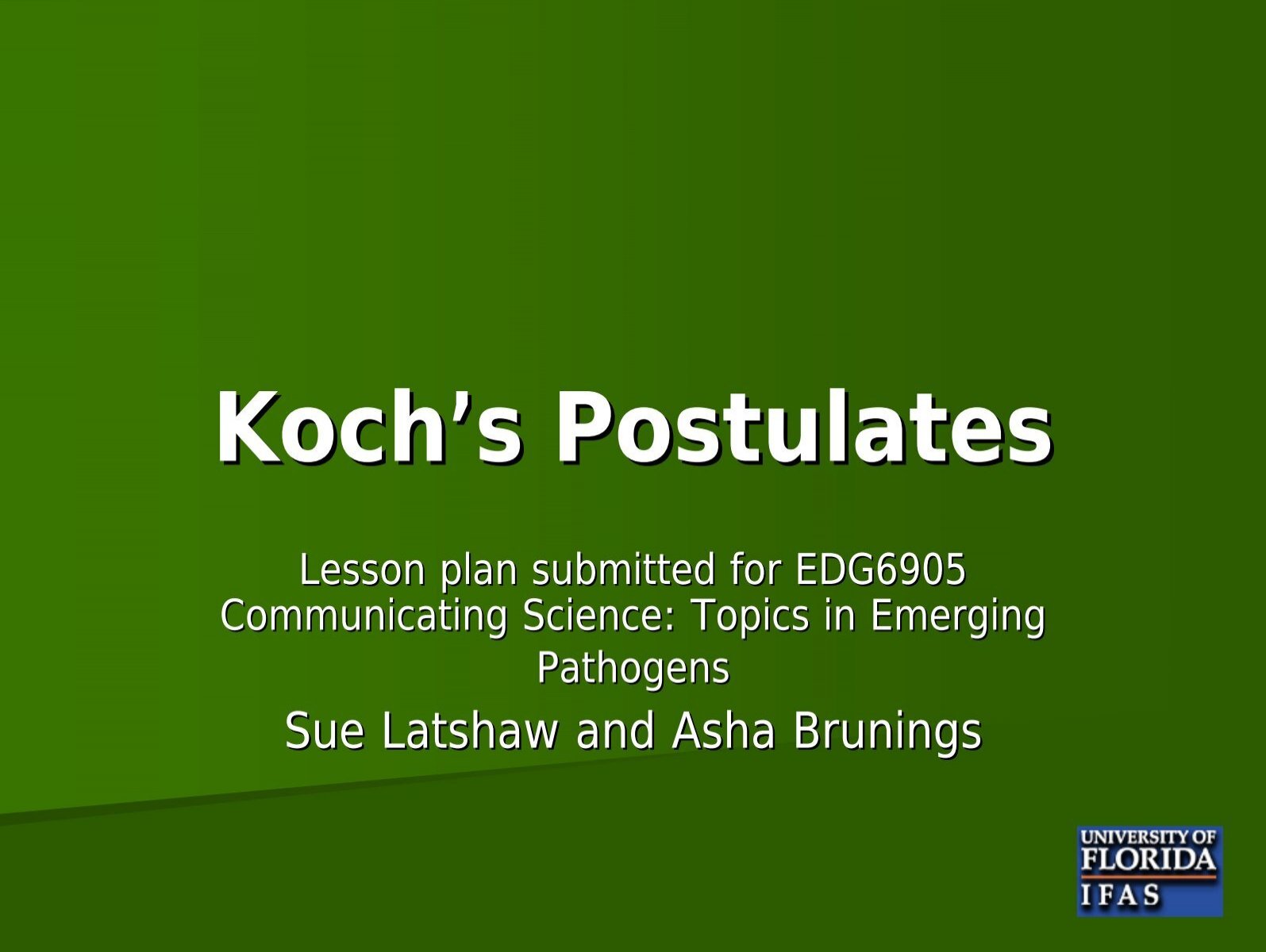
Koch S Postulates Presentation And Activity University Of Florida
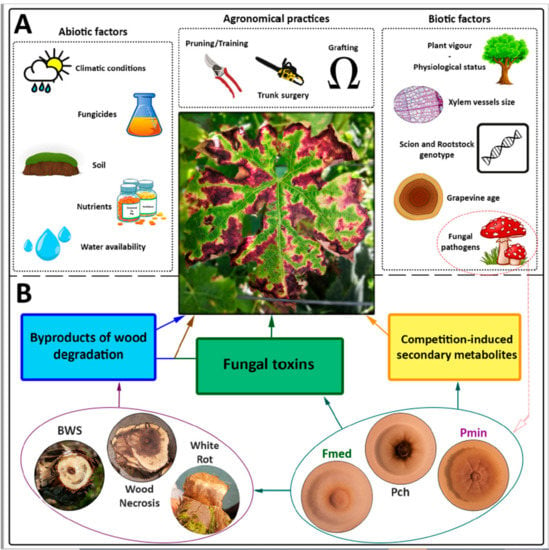
Jof Free Full Text White Rot Fungi Hymenochaetales And Esca Of Grapevine Insights From Recent Microbiome Studies Html
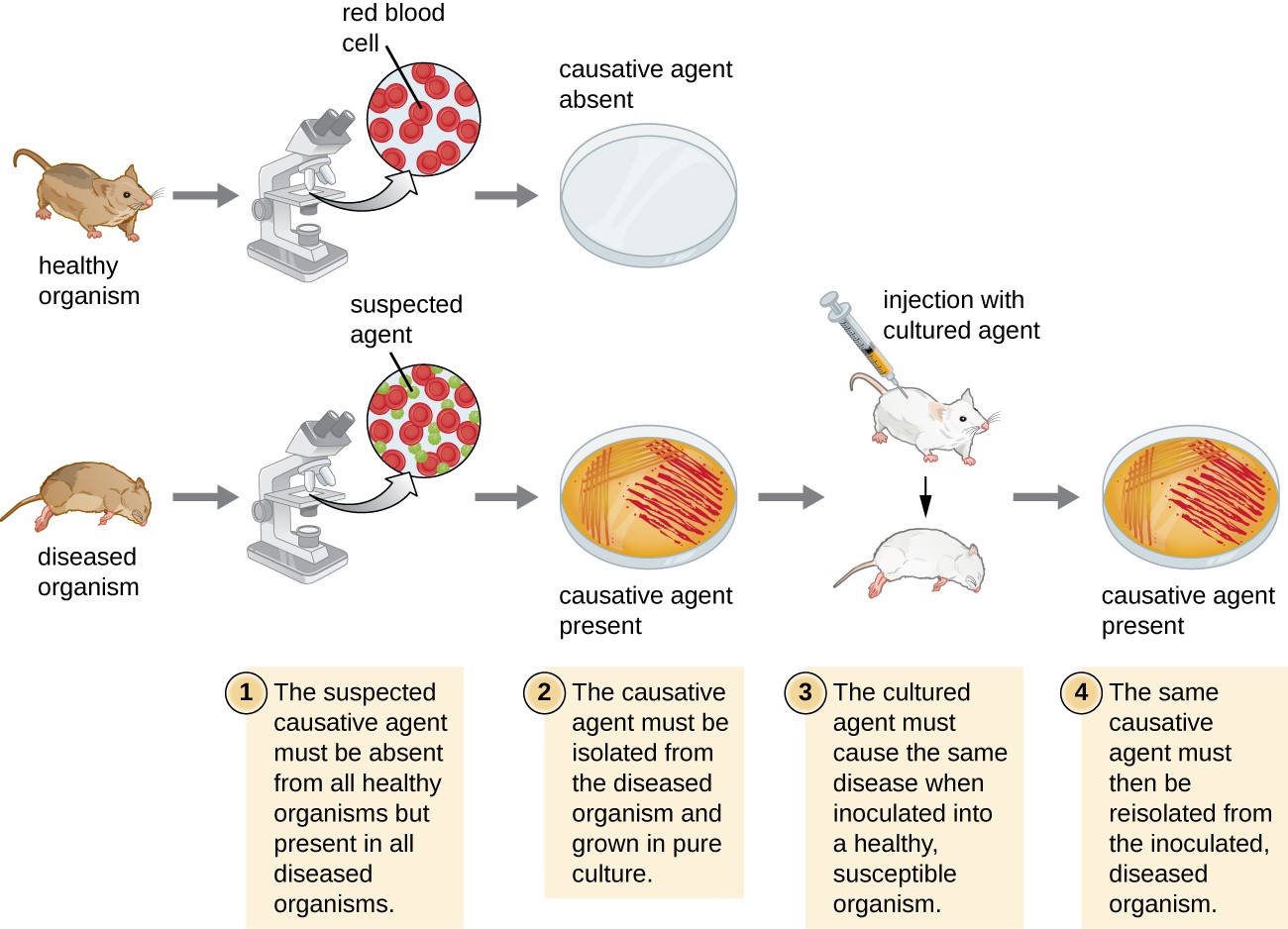
How Pathogens Cause Disease Microbiology

Germ Theory Of Diseases And Koch S Postulates Youtube

The Necessity To Revise Koch S Postulates And Its Application To Infectious And Non Infectious Diseases A Mini Review Request Pdf

Flow Diagram Describing The Events Leading To The Identification Of The Download Scientific Diagram


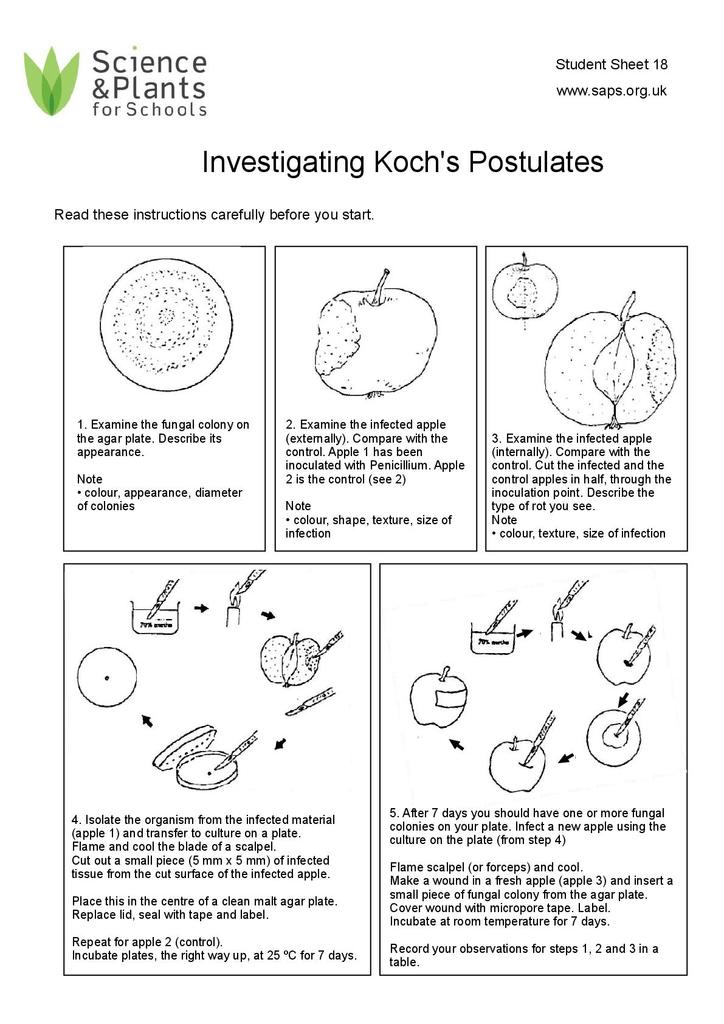



Comments
Post a Comment